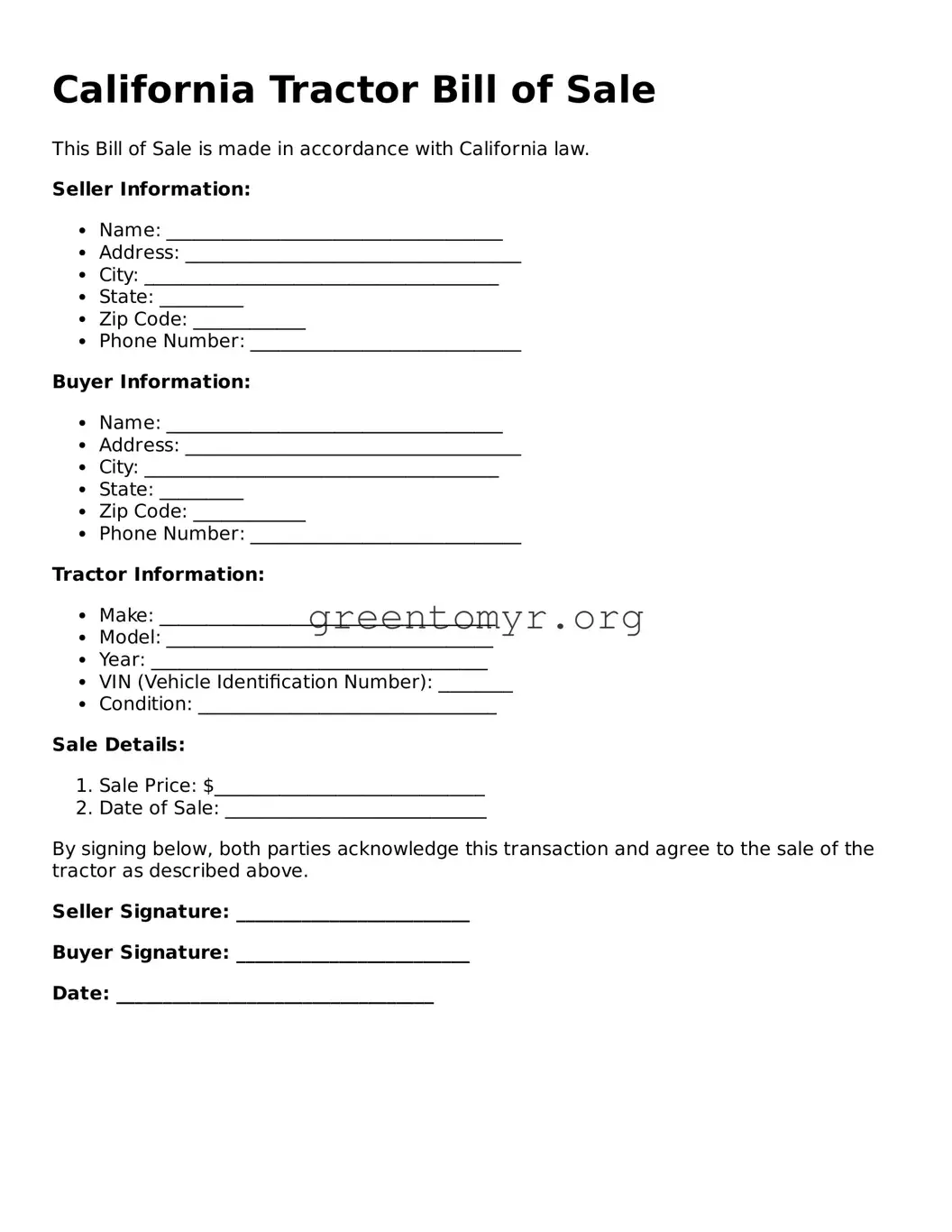California Tractor Bill of Sale
This Bill of Sale is made in accordance with California law.
Seller Information:
- Name: ____________________________________
- Address: ____________________________________
- City: ______________________________________
- State: _________
- Zip Code: ____________
- Phone Number: _____________________________
Buyer Information:
- Name: ____________________________________
- Address: ____________________________________
- City: ______________________________________
- State: _________
- Zip Code: ____________
- Phone Number: _____________________________
Tractor Information:
- Make: ____________________________________
- Model: ___________________________________
- Year: ____________________________________
- VIN (Vehicle Identification Number): ________
- Condition: ________________________________
Sale Details:
- Sale Price: $_____________________________
- Date of Sale: ____________________________
By signing below, both parties acknowledge this transaction and agree to the sale of the tractor as described above.
Seller Signature: _________________________
Buyer Signature: _________________________
Date: __________________________________
